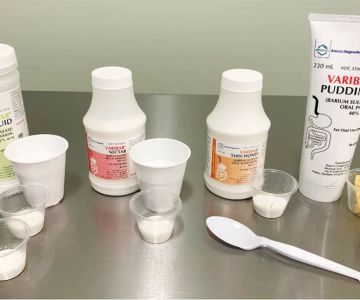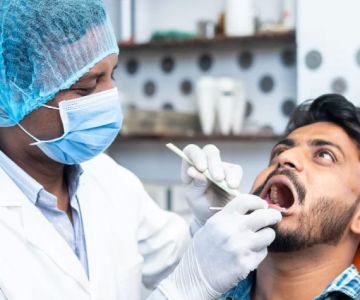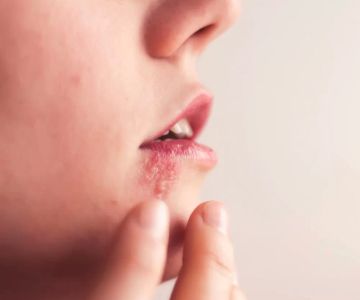Understanding Oral STDs: A Critical Health Concern
Oral sexually transmitted diseases (STDs) are an often-overlooked but serious health issue. While we typically associate STDs with genital contact, the mouth can also be a site for infections like herpes, gonorrhea, and syphilis. Understanding how to check for oral STDs is crucial for maintaining not only your oral health but also your overall well-being.
Oral STDs can result from engaging in oral sex with an infected partner, and symptoms may not always be visible immediately, making regular check-ups essential. Early detection can prevent the spread of infection and complications in the long run. In this article, we will explore the signs to look for, how to check for oral STDs, and what steps you can take to protect yourself.
1. Symptoms of Oral STDs: What to Look For
The first step in checking for oral STDs is to recognize the symptoms that may indicate an infection. These symptoms can vary depending on the type of infection, but some common signs include:
- Blisters or sores on the lips, gums, or inside the mouth (common in herpes infections)
- Painful swallowing or sore throat
- Redness, swelling, or pain in the mouth or throat
- Unusual discharge from the mouth or throat
- Swollen lymph nodes, particularly in the neck
- Persistent mouth pain or discomfort
While some symptoms are obvious, others, like gonorrhea or syphilis, may show up as less noticeable or in areas that are harder to inspect. It’s essential to be proactive and visit your healthcare provider if you experience any of these symptoms.
2. How to Check for Oral STDs: Self-Examination and Professional Evaluation
Checking for oral STDs at home is not always easy, as the infections might be subtle or not cause visible symptoms right away. However, self-examination can help spot visible signs of infection:
- Look for any unusual bumps, sores, or blisters around your mouth, gums, or inner cheeks.
- Examine the inside of your mouth for redness, swelling, or any painful areas.
- Inspect the back of your throat for irritation, swelling, or white patches that might indicate an infection.
If you notice anything unusual, it’s important to consult a healthcare provider for confirmation. In many cases, a simple physical exam combined with a swab test or blood work will help confirm whether you have an oral STD. Professional tests can offer more reliable results, and early detection is key to effective treatment.
3. Common Types of Oral STDs and Their Symptoms
There are several types of oral STDs that can affect the mouth and throat. Here are the most common ones:
Herpes Simplex Virus (HSV)
HSV, especially HSV-1, is one of the most common oral STDs. It causes cold sores or blisters around the mouth. These sores can be painful, and the virus can be spread even when there are no visible symptoms.
Gonorrhea
Gonorrhea is another STD that can infect the throat, often referred to as “oral gonorrhea.” Symptoms can include a sore throat, swollen lymph nodes, and sometimes a greenish-yellow discharge from the throat.
Syphilis
Syphilis can cause painless sores, or chancres, in the mouth or throat. Although these sores are not always painful, they can lead to serious complications if left untreated. Syphilis is highly contagious, and sores can appear within a few weeks of exposure.
Human Papillomavirus (HPV)
HPV can lead to oral warts and, in some cases, increase the risk of developing throat cancer. The symptoms are often not visible, but certain strains of HPV are linked to oral cancers.
4. Getting Tested for Oral STDs: Why It’s Important
If you are sexually active, especially in oral sex, it’s a good idea to get tested regularly for oral STDs, even if you don’t show any symptoms. Testing is typically straightforward and involves swabbing the throat or mouth for bacteria or viruses. Blood tests may also be conducted for viruses like herpes and syphilis.
Many clinics and healthcare providers offer routine screenings for oral STDs, and some testing can even be done at home with mail-in kits. By staying proactive about your health, you can ensure early treatment and prevent complications like infertility, chronic infections, or the spread of STDs to others.
5. Preventing Oral STDs: Tips and Best Practices
The best way to avoid oral STDs is through prevention. Here are some tips for reducing your risk:
- Use condoms or dental dams during oral sex to protect against STDs.
- Limit the number of sexual partners to reduce exposure to infection.
- Get vaccinated for HPV, which can help prevent certain types of oral cancers.
- Avoid oral sex if you or your partner have visible sores or symptoms.
- Maintain good oral hygiene by brushing your teeth and using mouthwash regularly.
By practicing safe sexual habits and being vigilant about your oral health, you can significantly reduce your chances of contracting an oral STD.
6. Treatment Options for Oral STDs
If you are diagnosed with an oral STD, the good news is that most of them are treatable. Medications like antivirals can help manage herpes, while antibiotics are used to treat bacterial infections like gonorrhea and syphilis. It’s important to follow your healthcare provider’s treatment recommendations and avoid engaging in sexual activity until you’ve been fully treated to prevent further transmission.
For chronic conditions like HPV, regular monitoring is recommended, as it may take years for symptoms to develop. In some cases, oral warts can be removed or treated with topical medications or minor surgical procedures.
Conclusion: Prioritize Your Oral Health
When it comes to your health, it’s always better to be safe than sorry. By understanding how to check for oral STDs, recognizing the symptoms, and getting tested regularly, you can stay in control of your health and ensure a long, healthy life. If you’re experiencing any oral symptoms or have concerns, don’t hesitate to contact a healthcare provider for expert advice and treatment.







 Baldwin Park Family Dentistry4.0 (16 review)
Baldwin Park Family Dentistry4.0 (16 review) Sims Dentistry of Louisville4.0 (192 review)
Sims Dentistry of Louisville4.0 (192 review) Ridge Periodontics & Dental Implants3.0 (12 review)
Ridge Periodontics & Dental Implants3.0 (12 review) Jared Berger DMD3.0 (4 review)
Jared Berger DMD3.0 (4 review) David C. Li DDS4.0 (154 review)
David C. Li DDS4.0 (154 review) Blaine Kidds Pediatric Dentistry4.0 (410 review)
Blaine Kidds Pediatric Dentistry4.0 (410 review) The Importance of Oral Health Education During Pregnancy for a Healthy Pregnancy
The Importance of Oral Health Education During Pregnancy for a Healthy Pregnancy Best Tips for Brushing Your Teeth Properly for Healthy Gums: Essential Techniques for Oral Health
Best Tips for Brushing Your Teeth Properly for Healthy Gums: Essential Techniques for Oral Health Why Skipping Dental Checkups Can Lead to Bigger Oral Health Problems
Why Skipping Dental Checkups Can Lead to Bigger Oral Health Problems Advantages of Porcelain Dental Restorations
Advantages of Porcelain Dental Restorations How Can Diabetes Cause Tooth and Gum Problems? Preventing and Managing Oral Health Issues
How Can Diabetes Cause Tooth and Gum Problems? Preventing and Managing Oral Health Issues Healthy Habits for Promoting Good Oral Health and Hygiene: Tips for a Healthy Smile
Healthy Habits for Promoting Good Oral Health and Hygiene: Tips for a Healthy Smile